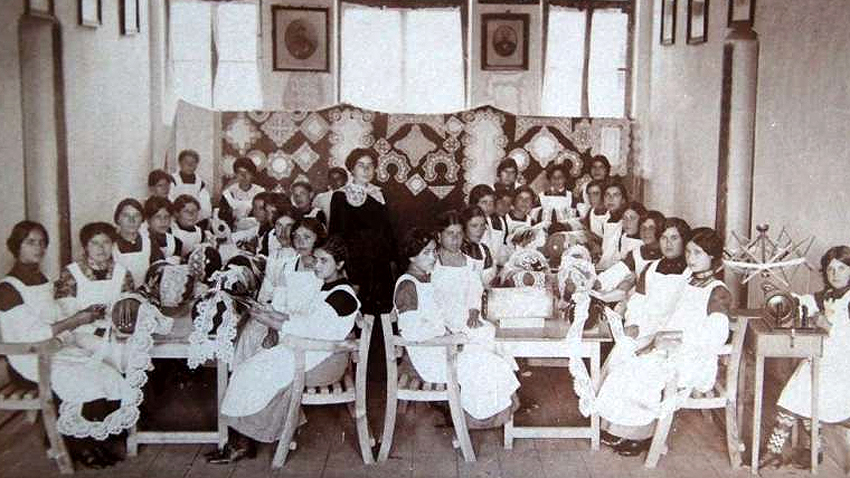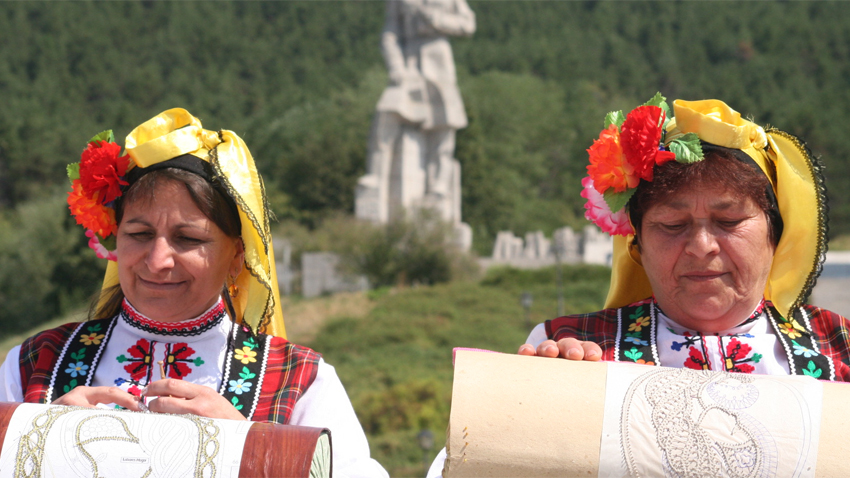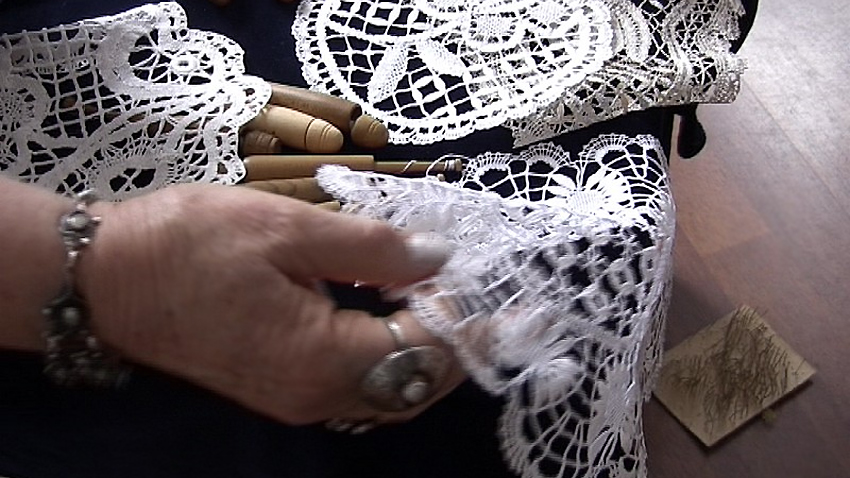At the beginning of the past century women from Kalofer were knitting laces more exquisite than Brussels lace. They had not received their education in academies of art and had not been to European cities, nor were they acquainted with fashion trends. But they had the most important quality - desire for knowledge and creativity, adventurous spirit, and imagination.
The Bulgarian town of Perushtitsa from the period of the Bulgarian National Revival brings us back to times when the art of Kalofer women captivated the heart of Europe. In the period September 8-14, the so-called Danovo School, named after its first teacher Hristo G. Danov, becomes venue for those willing learn to knit various laces – Brussels laces, frivolité laces and ‘kene’ (also known as Armenian lace).
The secrets of Brussels lace were brought to Bulgaria after the Liberation by Elisaveta Karaminkova. Knitting laces became a popular activity among women in the city. But women were not just copying but actually creating new types of laces and thus the Kalofer lace was born.

The women in Kalofer managed to quickly open a school, which taught basic lace knit patters. In less than half a century they created their own style that received global exposure and received gold medal at an international exhibition, Ema Zhunich who leads the lace-knitting workshop in Perushtitsa, says.
 But what is this purely Bulgarian thing that Kalofer women introduced to lace-knitting?
But what is this purely Bulgarian thing that Kalofer women introduced to lace-knitting?
“Brussels lace is very airy and is characterized by great delicacy but it is not very stable and cannot be often washed or starched,” Emma Zhunich says. “The first innovation was tightening the canvas and making the lace tight. The second is that Kalofer laces are characterized by dozens of patterns in the shape of sunflowers, flowers, animals, birds. A curious fact is that even today such exquisite patterns are rarely seen in the home of Brussels lace - Bruges.”
Emma Zhunich says Kalofer Lace is expensive needlework, but not in Bulgaria. Unfortunately, in this country the situation is different. Those who have the money have no taste for art and would rather buy a plastic doily. Those who appreciate the art of lace-knitting have no money to afford it. The master of lace knitting works in the Bulgarian Academy of Sciences where she explores musical theater, but her mission is reviving at least some of the traditions and skills of our ancestors. She had spent 16 years looking for an elderly woman who could show her how to use the needle from her grandmother's attic. That is why she is also happy when young people show interest in this art and ask her about some of its secrets. However, in the homeland of Brussels lace continuity between generations is a fact, while in Bulgaria few girls learn the skills of their grandparents, Emma Zhunich says.

“In Bruges, during holidays, Flemish women stay in front of their homes in traditional clothing, knitting. Tourists take pictures or buy some of their laces rather than going to the shop round the corner. The best thing is that little girls skillfully help the elderly women when knitting. In Bulgaria we say that knitting is for the old people but the young do not know what a pleasure it is to make something yourself – first using your imagination and then your hands. This cannot be compared even to the most expensive laces from the Flemish shops. Generations of Bulgarians have been deprived of that.”
But if we preserve something useful from the past, it would bring us benefits sooner or later, Ema Zhunic says.
English; Alexander Markov
"Thracians, Wine and Culture" is the theme of a seminar at the archaeological complex "Valley of the Thracian Kings" near Kazanlak , which brings together scholars and researchers from all over Bulgaria on February 22. This is the ninth edition of..
Help me do it myself, get me in touch with nature, take care of my immunity – these are the principles that the teachers at the Bulgarian kindergarten "Hristo Botev" in the Slovak capital Bratislava follow. The kindergarten has been operating since 2009..
"The place in France where we draw together the future of our children in Bulgarian" - this is how Yaneta Dimitrova described her workplace - the Bulgarian Sunday School "Ivan Vazov" in Paris a year ago in a post on a social network. It is one of the 396..
Prayer served by His Holiness Bulgarian Patriarch Daniil on February 22, marks the beginning of the celebrations for the consecration of..
In the era of increased digitalization and the penetration of artificial intelligence into all spheres of our lives, the professions of people with high..
"Thracians, Wine and Culture" is the theme of a seminar at the archaeological complex "Valley of the Thracian Kings" near Kazanlak , which brings..

+359 2 9336 661
